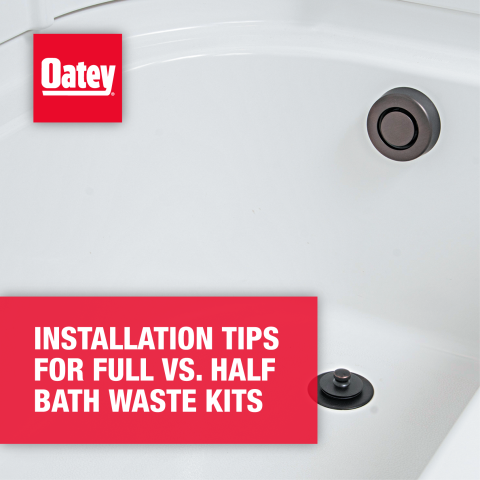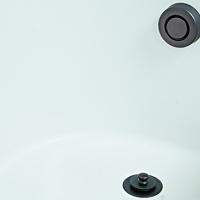blog / Bath Waste & Overflow
When are brass side outlet or direct drain Uni-Lift bath waste/overs used?
These styles of bath waste/overflows are installed when the wood framing of the home is centered directly below the vertical drop of the overflow tube, and the project requires a brass waste/overflow. These two options allow for the tub trap to be located directly below the stopper or offset to the side. The wood framing should never be cut out without approval from a local building official because it could weaken or cause collapse of surrounding floors and walls.
How is a bath waste/overflow tested for leaks after installation?
If you are just replacing an existing bath waste/overflow with a new one, a draining test will work. This test is completed by closing the stopper and filling the tub with cold water until it starts to flow through the overflow plate, and then shut off water and inspect all connection points behind the tub. Use cold water for energy savings. If the bath waste/overflow are part of a larger plumbing system installation, reach out to your local building officials to find out what type of test is required.
What is the difference between a Half Kit and Full Kit?
The Half Kits are sold without a DWV (drainage waste and vet) tee fitting, and without any 1½” precut pipe sections. These kits are normally purchased by contractors because they have the pipe and fittings in their stock. The Full Kits are sold with these items in the package, and are normally purchased when an installer doesn’t want to have extra pipe and fittings after the installation in completed. After installation, both kits look and operate the same way.
When would a condensate top elbow be used?
This elbow is very job specific and you would only use it if your local code allows this application. In some municipalities it is approved to attach a condensate drain to the overflow elbow because of the free flow through the overflow into the sanitary drains. This elbow should never be used unless a condensate drain is connected properly, because a leak can develop if it is not. You should always check with your local building officials before installing this type of drain connection.




